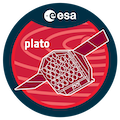Conveners
PLATO mission - Where we are
- Isabella Pagano
- Magali Deleuil
PLATO aims at the detection and characterization of terrestrial planets around solar-type stars as well as at the study of their host star properties. The key performance of PLATO is to detect terrestrial planets orbiting in the habitable zone of these stars. This science goal drives the design and the operations of the mission. The PLATO Payload features a complex multi-telescope...
The PLATO mission will make available to the community a broad range of data products for the stars of the PLATO Input Catalogue. The product levels cover from raw data to clean light curves, including intermediate products, and catalogues with the planetary candidates, stellar asteroseismic parameters, and stellar properties. For a set of approximately 20,000 stars, the so-called Prime...
PLATO will begin observing stars in the Southern Field (LOPS2) after launch in late 2026. By this time, TESS will have observed the stars in LOPS2 for at least four years. On average each star in the PLATO field has been monitored for 270 days by TESS already. This data gives us insights into the stars that PLATO will observe and we create a catalogue of all the information we can obtain...

